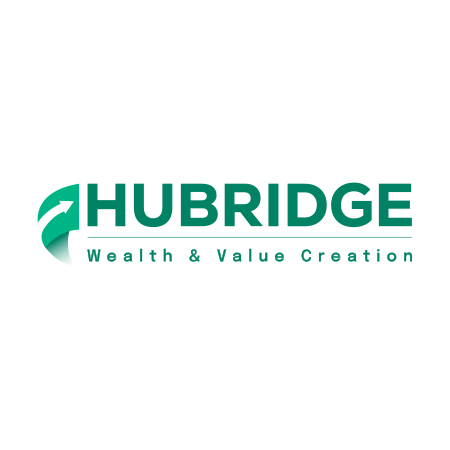How to Tell If Your Portfolio is Truly Performing
Think your investments are doing well? Think again. Discover how to truly evaluate your portfolio’s performance—beyond just returns. At Hubridge, we believe smart investing starts with clarity, research, and benchmarking. Don’t settle for guesswork - make your money work smarter.


Are you winning the investment game, or just thinking you are?
Most investors have a vague idea about how their portfolio is doing. They see some green numbers, a few red ones, and maybe a year-end summary. But very few know the answer to a critical question:
“Is my portfolio truly performing, especially when compared to the broader market, and after adjusting for risk, taxes, and fees?”
It’s an uncomfortable but important reality check. Even seasoned investors often ignore it. They focus on absolute returns without asking how those returns came and at what cost. But if you want to grow your wealth sustainably, you need to dig deeper than surface-level gains.
Absolute vs Relative Performance
Let’s say your portfolio delivered 10% annual returns over the past five years. That might sound impressive, until you realise that the NSE 500 or S&P 500 returned 12 - 14% annually over the same period. Not only did you underperform, but you also may have taken on far more risk to get there.
This is where relative performance matters. You must compare your returns against suitable benchmarks based on geography, asset allocation, and risk level. A diversified Indian equity portfolio, for instance, might be compared to the Nifty 500 TRI, not a fixed deposit or gold.
Even more importantly, your portfolio’s performance should be measured after:
- Management or advisory fees
- Capital gains taxes
- Market drawdowns (periods when your portfolio lost significant value)
- Inflation
If you're unsure how your portfolio stacks up against a benchmark on these fronts, it's time for a closer look.
Risk-Adjusted Returns
Most investors chase high returns. But smart investors ask: What risk did you take to get those returns?
If Portfolio A returns 12% with wild ups and downs, and Portfolio B returns 11% with much smoother performance, Portfolio B may actually be superior. This is where risk-adjusted return metrics like the Sharpe Ratio, Sortino Ratio, and Maximum Drawdown come into play.
These indicators help you see whether your returns are truly efficient or if you're unknowingly riding a rollercoaster with no seatbelt. If your portfolio has high returns but also frequent, deep crashes, that’s not sustainable wealth creation.
Investors who ignore risk-adjusted performance often end up with inflated expectations and painful surprises.
The Hidden Costs That Eat into Returns
While you may believe you are outpacing the market, hidden costs may be negatively influencing your returns.
Some common ways this can happen:
- Advisory or fund management fees, often higher than 1-2%
- Your frequent trading and/or brokerage fees
- Short-term capital gains taxes
- Timing errors (buy high, sell low)
Even a small annual fee of 1-2% may put you below the market's return, as these costs compound negatively over time.
To calculate your true net returns, subtract these costs from your gross returns. Only then can you understand whether your investing strategy is actually working.
What the Best Investors Do Differently
While beating the market consistently is rare, it’s not impossible. Data from the CFA Institute and various independent studies show that long-term outperformance is achievable but only with discipline, strategy, and research.
Top investors often follow a few key principles:
They buy quality businesses and hold them for years. They run focused, high-conviction portfolios, rather than spreading investments thin across 30 or 40 stocks. They often follow contrarian or value-based approaches, finding opportunity in undervalued sectors. And they use tactical allocation, rotating sectors based on macro trends and fundamentals.
But above all, they do deep research. At Hubridge, research is the core of our advisory philosophy. Every recommendation, allocation, and change is backed by structured analysis and evidence-based reasoning. This commitment allows us to deliver market-beating, risk-adjusted returns to our clients not occasionally, but consistently.
If your investing decisions are driven more by hope than insight, you’re likely leaving performance on the table.
The Benchmark Isn’t Your Enemy
Your benchmark tells you what you could have earned passively, just by investing in an index. It’s not there to discourage you; it’s there to guide you.
If your portfolio can’t beat the benchmark after fees, risk, and taxes, then why not just invest in a low-cost index fund? The truth is, many investors would be better off doing just that unless they or their advisor can consistently deliver better.
Is Your Portfolio Truly Performing?
Here’s a quick test. Ask yourself:
- How have my returns compared to a suitable index over the past 3, 5, or 10 years?
- What level of risk and volatility have I endured?
- What costs visible and hidden have I paid?
- Did I beat the market after all of that?
If you don’t know the answers, it doesn’t mean you’ve failed. It simply means it’s time to take control. Because investing blindly is easy, but building wealth with precision is what sets true investors apart.
At Hubridge, we believe in assisting clients in investing with insight, research, and discipline, not only expectation and faith. Even if you are managing your own portfolio or looking for professional assistance, don’t just look at actual performance numbers. Take a step back. Ask the harder questions. Invest wiser.
Conclusion
Your investment journey should NOT be a guessing game. A true performing portfolio is a portfolio that consistently delivers returns that are informed, risk-aware, and beat an appropriate benchmark. Knowing your numbers, questioning your strategy, and refining your approach is how real wealth is built.
You don’t need to be a market genius, but you do need clarity. And once you have it, you’ll never go back to vague investing again.
Let your money work smarter. Make performance your priority.







